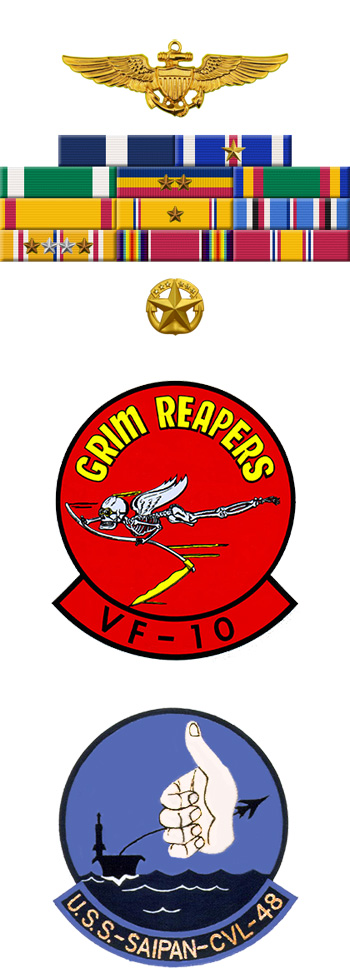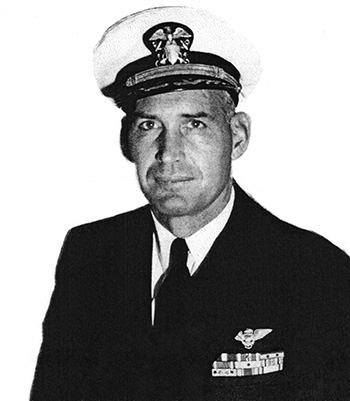
|
William R. Kane |
 |
|||
| Rank, Service | ||||
Captain O-6, U.S. Navy |
||||
| Veteran of: | ||||
|
||||
| Tribute: | ||||
William Kane was born on June 4, 1911, in San Rafael, California. He entered the U.S. Naval Academy in June 1929, and graduated with a commission as an Ensign on June 1, 1933. His first assignment was aboard the battleship USS New York (BB-34) from June 1933 to April 1934, followed by service aboard the heavy cruiser USS Astoria (CA-34) from April 1934 to June 1935. Ens Kane completed flight training and was designated a Naval Aviator at NAS Pensacola, Florida, in August 1936, and then served with VB-5B aboard the aircraft carrier USS Lexington (CV-2) from August 1936 to June 1937. He then served with VF-2, also aboard USS Lexington, from June 1937 to July 1938, followed by service as a Physical Training Instructor and Assistant Football Coach at the U.S. Naval Academy from July to December 1938. LtJg Kane next served as a float plane pilot aboard the heavy cruiser USS Wichita (CA-45) from January 1939 to June 1940, and then served as a flight test officer at NAS Pearl Harbor, Hawaii, from July 1940 to October 1942. His next assignment was as Executive Officer and then Commanding Officer of VF-10 aboard the aircraft carrier USS Enterprise (CV-6) from October 1942 to February 1944, followed by service as Commander of Air Group 10 aboard the Enterprise from February to September 1944. During this time, CDR Kane was credited with the destruction of 6 enemy aircraft in aerial combat, plus 1 probable and 2 damaged, all while flying F6F-3 Hellcat fighters. He served in the Office of the Chief of Naval Operations in the Pentagon from September 1944 to December 1945, and then served as Executive Officer of the Department of Physical Training and as Assistant Director of Athletics at the U.S. Naval Academy from December 1945 to January 1948. His next assignment was as Operations and Air Officer aboard the aircraft carrier USS Tarawa (CV-40) from January 1948 to June 1949, followed by Air War College at Maxwell AFB, Alabama, from July 1949 to June 1950. He then returned to the Pentagon, serving on the staff of the Chief of Naval Operations in the Bureau of Aeronautics from July 1950 to February 1952, and then served as Chief of Staff for the Commander of Heavy Attack Wing ONE at NAS Norfolk, Virginia, from February 1952 to January 1953. Capt Kane served on the Staff of the Commander in Chief Atlantic Fleet from January 1953 to July 1954, followed by U.S. Naval War College at Newport, Rhode Island, from August 1954 to June 1955. His next assignment was on the Staff of Commander Air Force, U.S. Atlantic Fleet, from June 1955 to June 1956, and then as Commanding Officer of the aircraft carrier USS Saipan (CVL-48) from July 1956 until he was killed in the crash of a TV-2 Seastar on February 5, 1957. William Kane was buried at Arlington National Cemetery. |
||||
|
||||

